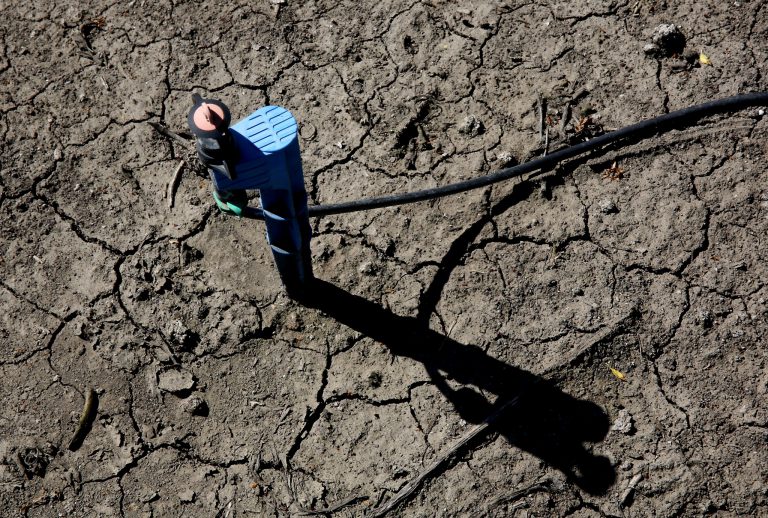
The severe drought gripping California is affecting everyone across the state, from farmers to small business owners to grocery stores – and colleges and universities are no exception.
As Californians and the state’s agricultural industry scramble to rethink their water consumption in the face of depleting resources, the debate about water use is coming to campus. Many universities are taking a hard look at their water usage and adopting water action plans to reduce their drain on the state’s diminishing water reserves.
A number of colleges in California, which has the largest public university enrolment in the US, had already begun drafting water action plans early last year, after the University of California and California State University System announced their plans to cut water consumption by 20 percent by 2020, according to Inside Higher Ed.
However, experts caution, those goals may already be outdated in the face of the growing crisis, which earlier this month led Governor Jerry Brown to call on cities and towns to cut their water consumption by 25 percent over the next year. According to Boykin Witherspoon III, director of programs for the Water Resources Institute at California State University at San Bernardino, many universities will likely have to revise their action plans in order to comply with the new statewide restrictions.
A main tactic universities are using to decrease their water usage is altering their landscaping. Landscaping is a primary consumer, with about 50 percent of California’s drinkable water (excluding that used for agriculture) going toward landscaping, according to Witherspoon. The extensive lawns, palm trees, flowering plants and fountains on California’s university campuses all require water to stay green and healthy.
California State University at Long Beach, for example, which serves more than 36,000 students, uses almost 200 million gallons of water each year. Landscape irrigation and athletic field upkeep account for between 40 and 50 percent of the university’s total water usage, said Michael Uhlenkamp, executive director of news and digital media.
Though campuses can’t simply replace their acres of grass with drought-resistant plants – at $5 per square foot, such a project would run into the tens of millions of dollars – they are looking for ways to incorporate more sustainable plants into current and proposed development and landscaping projects.
Universities are also looking to other areas on campus, including kitchens and residence halls. Long Beach installed low-flow showerheads and faucets in the bathrooms of all its residence halls last year, and the University of California at Los Angeles is completing the installation of a new water filtration system that will save an estimated 17.3 million gallons each year.
Management and research teams in both the UC and CSU systems – which serve more than 680,000 total students across all campuses – are examining both individual university and system-wide practices that could be leveraged to improve sustainability on campus.
Even student groups are getting involved. During the annual rivalry week between UCLA and the University of Southern California, both in Los Angeles, the schools competed to see which university could recruit more students to commit to a pledge to conserve water.
At Stanford University, a private institution, students have suggested even more radical changes. In an opinion piece published in student newspaper The Stanford Daily, student Asha Brundage-Moore pushed for the establishment of “Meatless Monday” – one day a week without meals involving meat – to be implemented in campus dining halls.
Brundage-Moore cited statistics showing that meat production requires far more resources than other types of food – it takes 1,800 gallons of water to produce a pound of beef, compared to 200 gallons for a pound of pasta.
“If California is going to reduce its water consumption by 25 percent, changing what types of foods are being produced and consumed must play a major role,” she wrote.
Like this? You’ll love these…
Beijing’s international schools get creative to combat air pollution
University of Michigan offers $16K ‘Inclusive Language Campaign’







